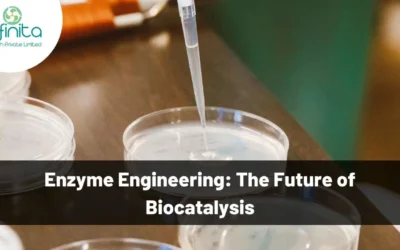What are enzymes and what do they do in our bodies? Enzymes are basically proteins that are produced by living organisms to bring about certain metabolic and biochemical reactions in the body. They are biological catalysts that speed up reactions inside the body.
What Is The Structure Of An Enzyme?
Enzymes, as mentioned above, are biological catalysts. While they hasten or speed up a process, they are actually providing an alternative pathway for the process. But, in the process, the structure or composition of the enzymes remain unaltered.
Enzymes are actually made up of thousands of amino acids that are linked in a specific way to form different enzymes. The enzyme chains fold over to form unique shapes and it is these shapes that provide the enzyme with its characteristic chemical potential. Most enzymes also contain a non-protein component known as the co-factor.
An enzyme’s function is intrinsically linked to its three-dimensional structure, determining how it performs substrate binding, catalysis, and regulation. X-ray crystallography has been the most important technique in the development of our understanding of enzyme structure and function. Nuclear magnetic resonance (NMR) has also been used successfully to study many structures, but crystallography remains the principle technique for structure elucidation. The first enzyme to be crystallised and have its structure successfully solved was chicken egg lysozyme in 1965. Importantly, as well as the structure of the free enzyme, it was possible to crystallise lysozyme with a substrate analogue bound in the active site. This structure, allowed the proposal of a chemical mechanism for the enzyme, based on positioning of groups around the site of substrate cleavage. The use of crystal structures with bound substrate and transition state analogues has helped to reveal the catalytic mechanisms of countless enzymes since.
Domains
Larger proteins tend to fold into a series of smaller domains, each of which forms a self-contained structural unit. These domains are often described as the units of evolution because they can often be swapped between proteins without disturbing the folding of other parts of the protein and thus novel functions can be created by novel combinations of domains within a single protein. In enzymes, certain functions are often contained within a domain. For instance, the nucleotide-binding Rossmann domain is found combined with a diverse range of separate catalytic domains, allowing each enzyme to bind similar nucleotide cofactors such as nicotinamide adenine dinucleotide (NADH), nicotinamide adenine dinucleotide phosphate (NADPH) and flavin mono-nucleotide (FMN), but perform quite different chemistry. Figure 1.9 shows two different Rossmann domain-containing enzymes: glyceraldehyde-3-phosphate dehydrogenase (GAPDH) and 1-deoxy-d-xylulose-5-phosphate reductoisomerase (DXR). Both enzymes contain the Rossmann domain with a common 3 parallel strand β sheet flanked by α helices. This sheet binds to the cofactor NAD in the case of GAPDH and NADP in the case of DXR. The remainder of the enzyme structure and functon is completely unrelated and contain quite different catalytic residues which allow them to catalyse their different reactions.
Active Sites And Clefts
Although enzymes are often large molecules comprising many hundreds of amino acids, the functional regions of an enzyme are generally restricted to clefts on the surface that comprise only a small part of the enzyme’s overall volume. The most important of these regions is the active site – the pocket or cleft in which the enzyme binds the substrate and in which the catalytic chemistry of the enzyme is performed. Analysis of enzyme structure and function have shown that active sites tend to be formed from the largest cleft on the surface of the protein.
Phosphofructokinase catalyses the phosphorylation of Dfructose 6-phosphate, converting ATP into ADP in the process. It is regulated by binding of ATP to an allosteric site, quite distinct from the active site, that inhibits the enzyme. These regulatory clefts as well as being able to bind regulatory molecules, also require the ability to transmit binding information from themselves to the active site, so that catalytic activity can be regulated.
How Do Enzymes Work?
For any reaction to occur in the universe, there is an energy requirement. In cases where there is no activation energy provided, a catalyst plays an important role to reduce the activation energy and carried forward the reaction. This works in animals and plants as well. Enzymes help reduce the activation energy of the complex molecules in the reaction. The following steps simplify how an enzyme works to speed up a reaction:
Step 1: Each enzyme has an ‘active site’ which is where one of the substrate molecules can bind to. Thus, an enzyme- substrate complex is formed.
Step 2: This enzyme-substrate molecule now reacts with the second substrate to form the product and the enzyme is liberated as the second product.
There are many theories that explain how enzymes work. But, there are two important theories that we will discuss here.
Theory 1: Lock and Key Hypothesis
This is the most accepted of the theories of enzyme action.
This theory states that the substrate fits exactly into the active site of the enzyme to form an enzyme-substrate complex. This model also describes why enzymes are so specific in their action because they are specific to the substrate molecules.
Theory 2: Induced Fit Hypothesis
This is similar to the lock and key hypothesis. It says that the shape of the enzyme molecule changes as it gets closer to the substrate molecule in such a way that the substrate molecule fits exactly into the active site of the enzyme.
What factors affect enzyme activity in the cell?
- Concentration of Enzymes and Substrates: The rate of reaction increases with increasing substrate concentration up to a point, beyond which any further increase in substrate concentration produces no significant change in reaction rate. This occurs because after a certain concentration of the substrate, all the active sites on the enzyme are full and no further reaction can occur.
- Temperature: With the increase in temperature, the enzyme activity increases because of the increase in kinetic energy of the molecules. There is an optimum level when the enzymes work at the best and maximum. This temperature is often the normal body temperature of the body. When the temperature increases beyond a certain limit, enzymes, which are actually made up of proteins, begin to disintegrate and the rate of reaction slows down.
- pH: Enzymes are very sensitive to changes in the pH and work in a very small window of permissible pH levels. Below or above the optimum pH level, there is a risk of the enzymes disintegrating and thereby the reaction slows down.
- Inhibitors: The presence of certain substances that inhibit the action of a particular enzyme occurs when the inhibiting substance attaches itself to the active site of the enzyme thereby preventing the substrate attachment and slows down the process.







